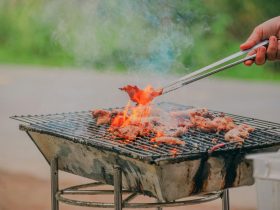Food safety is the scientific discipline of handling, storing, and serving food to avoid foodborne illness. Adhering to this discipline seems to require intimidating processes and procedures but, as a matter of fact, it can be very basic and can be easily followed even in our homes. Here are the 3 pretty basic tips to maintain food safety in both our homes and workplace:
Cleaning
Cleaning is basically the removal of visible dirt and grease on any surfaces, may it be food contact surfaces or non-food contact surfaces. This is simply done by wiping surfaces every after use so that there will be neither accumulation of dirt nor any build-up of dust in the food preparation area. Clean-As-You-Do (CAYDO) and Clean-As-You-Go (CAYGO) falls under this basic tip. This one is the most basic tip in maintaining food safety and can be easily done without too much effort.
Sanitation
A sanitized surface is way better than a clean surface because while cleaning only removes any visible dirt and grease on surfaces, sanitizing kills the invisible ones. This means that sanitation kills the pathogens on surfaces that may contaminate food and cause foodborne illness. This is done by using certain food-contact chemicals (like bleach in definite concentration) and other organic liquids such as vinegar and other acidic solutions. Heat can also be applied to sanitize surfaces. A sanitized surface is a must prior to food production/preparation.
Separate Raw Food from Cooked Food
This is simply basic food safety and basic microbiology. Raw food contains high amount of bacteria compared to cooked food. Why? Because cooked food has already been subjected to heat by cooking and application of heat kills pathogenic bacteria. Now, if separation of these foods is not followed, contamination from raw to cooked food can be highly promoted. In the storage area such as refrigerators, chillers, and freezers, cooked food must be placed on the upper part and the raw food must be placed under them. Materials and utensils (knives, chopping board, etc.) used for raw food must also be different and/or separated from the ones used for cooked food.
Without any external factors acting during the actual food handling, these three basic tips can really help in hindering the occurrence of food poisoning.








Leave a Reply